
Keeping your house warm without electricity is a toasty topic that people are searching heatedly nowadays, for good reasons too. Winter is the time of year when temperatures dip down into the single digits, when heavy winds blow, and sometimes it snows.
At the moment, we are experiencing unseasonably warm temperatures with bucketloads of rain. It’s the first time there is standing water in the cellar for years on end.
Typically it would be frozen at this time of winter, but there’s not much we can do about the weather and neither can you. So, as we sit here inside, by the fire, it seemed like a good moment to share a few hacks for keeping you and your family warm and thriving in wintertime.
Then you can let it snow all it wants or just be unseasonably cold as you sip a warming tea or a cup of nourishing broth. At the same time, you can light a beeswax candle and cover yourself with a blanket for some evening reading, offline, of course.
How To Keep Yourself – and Your Home – Warm In Winter
Elizabeth wrote an article about 40 Tricks To Warm Your Home Without Turning Up The Heat. This writing goes more in-depth about passive solar design for warming your home, as well as adding insulation to keep it cozy. Some of these heating tricks take time/money in order to feel the rewards.
Today we are going to focus on winter warming hacks that most likely cost nothing. Plus, they are easy to carry out, and some of them are quite tasty, though you may want to have an exercise program at the back of your mind. Moving your body will help to keep you warm too.
These are the very tips and tricks that we use in our own home throughout the course of a winter. And trust us, if it isn’t cold yet, it will be. There are still two months, or more, of winter.

1. Dress in Layers
If you are a snow enthusiast and are keen on getting outside for winter hikes, you already know about dressing in layers.
It takes a base layer (underwear) to wick sweat from your body. Then you put on a middle (insulating) layer to retain body heat and protect you from cold temperatures. Finally, there is an outer (shell) layer to your attire which protects you from the elements.
When all is said and done, it matters what fibers you are wearing in each layer; you also need to feel comfortable in your layered clothes.
From experience, I can honestly say that a wool/leather vest is a winter lifesaver. Not only is it useful inside the home for the fluctuating temperatures of a wood-fired stove, but it is also the perfect attire for going in and out to collect more firewood too.
2. Wear a Hat, Scarf, Socks or Slippers
I’m going to go out on a limb here and say that in our family, we are barefoot most of the time. Yes, even in winter, to quickly go outside in the snow, to step outside on the porch or to get water from the outside faucet.
Cold exposure is another way of building up your resilience to deal with cool temperatures, but I’ll save the rhetoric for Wim Hof. For most people, cold showers will have to wait till summer or some time later in life.
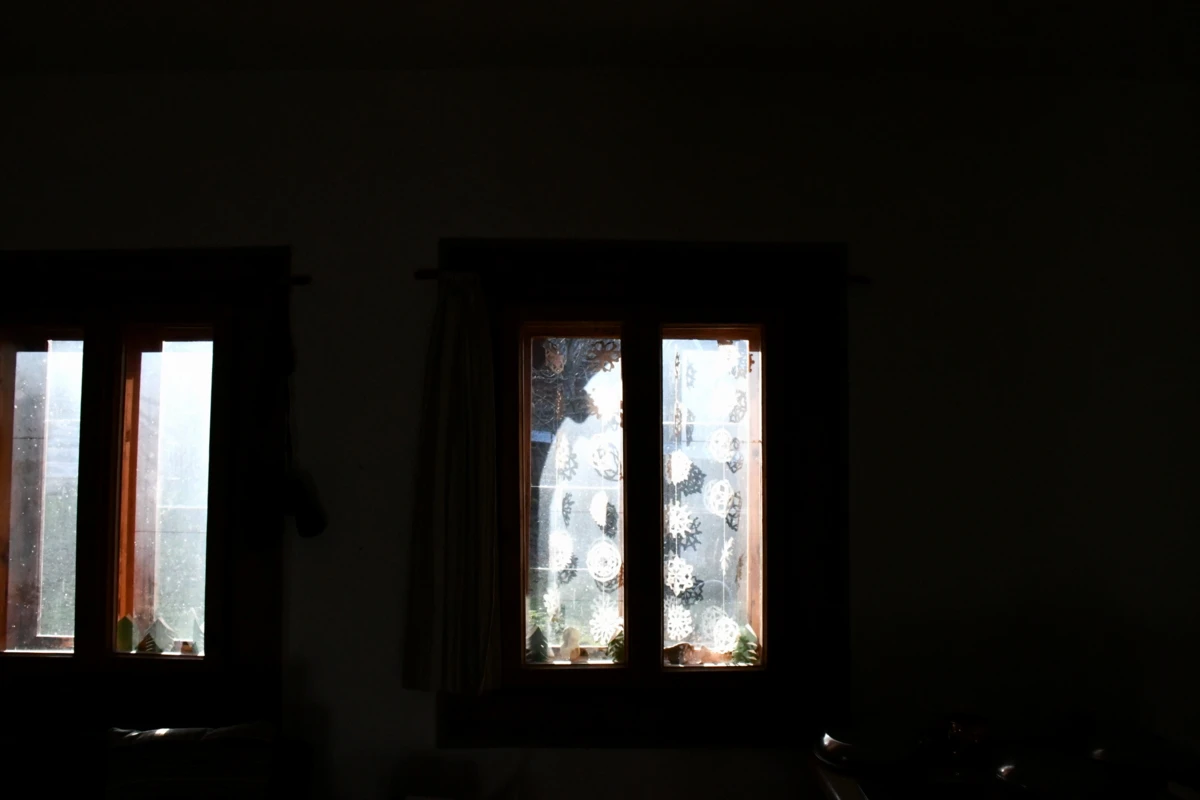
If it’s truly chilly in your home, don’t be afraid to don a hat, a thick pair of socks or some woolly slippers to keep your body warm. Every little bit helps. In the meantime, keeping yourself warm may lead to a new hobby, such as crocheting or knitting. Those are both fantastic ways to fill the long nights of winter.
Unless you decide to go to your warming bed earlier (between down pillow and comforter, I’m thinking), which is another hack by itself.
3. Cook a Pot of Soup and Bake a Loaf of Bread
Baking will never lead to sauna-like conditions in your home, though the kitchen is often the warmest place to be in winter. So, utilize it as often as you can by cooking at home rather than ordering in. This especially rings true if you have grown a garden and still have fresh vegetables to use up.
Winter is an excellent time to finally use your dehydrated mirepoix and tomato powder in warming soups and stews.
It also gives you a window of opportunity to practice the art of bread baking. Whether you are starting a sourdough from wild yeast or going the easy route with a no-yeast bread.
The scents of a hearty meal will definitely warm your soul.
A couple more warming tips: Don’t forget to leave the oven door open after baking, if it’s safe to do so in the absence of small children and/or pets. And never use your oven as a primary source of heat, ever, especially if it’s burning natural gas – think carbon monoxide levels.
4. Hot Beverages Are a Must
Just as you should be eating hearty soups and stews to stay warm, hot drinks are also a must. The point here is the intake of hot fluids. Seeing as how you can’t eat all day long, it’s good to have a stock of caffeine-free herbal teas to see you through the winter.
Some of my best wild-foraged tea suggestions are:
- nettle
- rosehip
- linden
- plantain
- mint
- red clover
- dandelion leaf and root
- raspberry leaf
- pine needles and spruce tips
- elderflowers
- yarrow
- lemon balm
- sage
- chamomile
- chaga
You can purchase all of these herbs from a natural food store, though it’s empowering to forage them all on your own. Maybe that’s the new skill you need to learn in the new year.
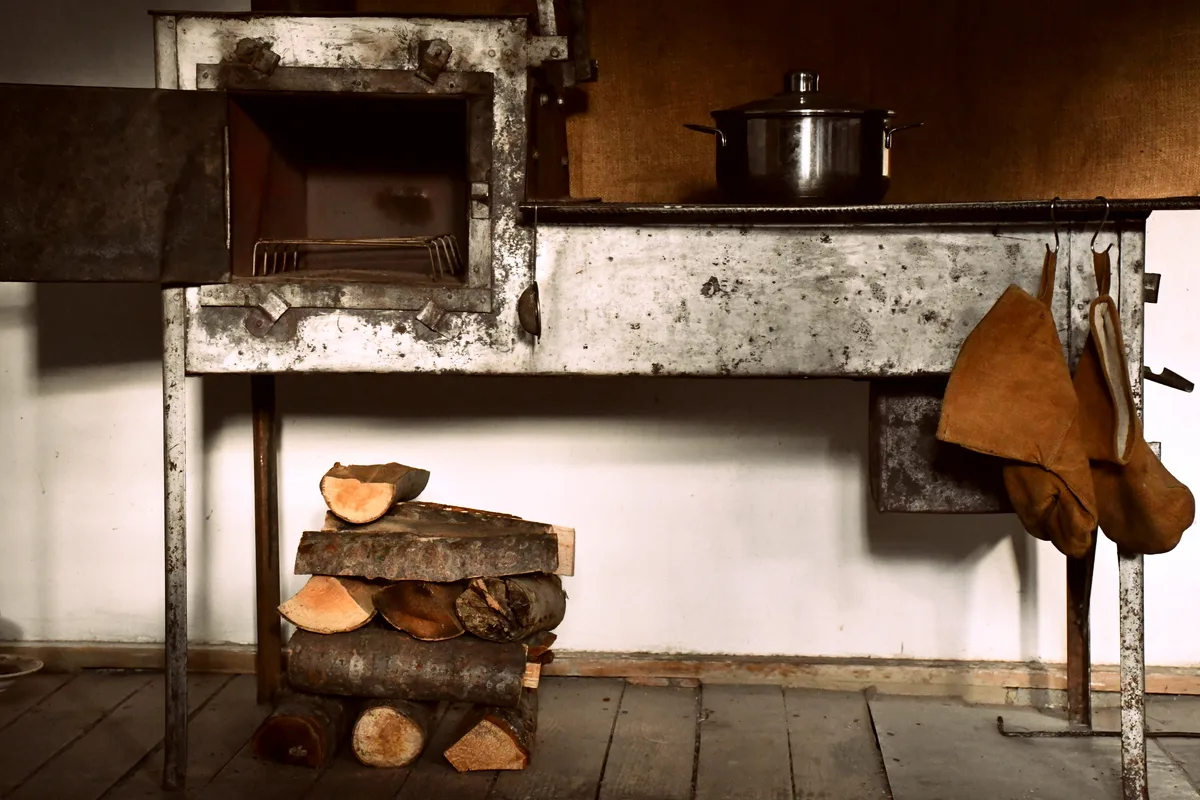
5. Insulate Windows and Doors
Now that you’ve done just about all you can do to keep yourself warm, what about your home?
Are there any small things you can do to make your personal space feel warmer inside? There certainly are.
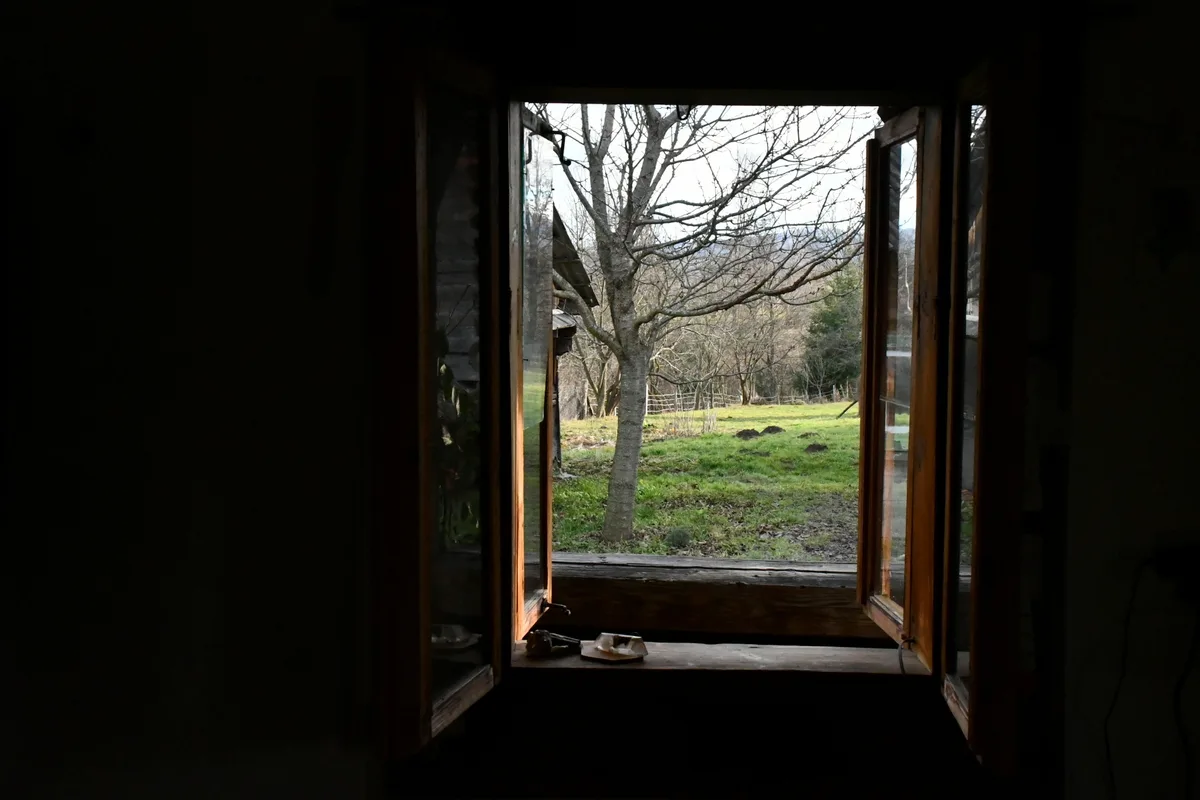
But let me start by saying that there is still a time and place, even in winter, to open your windows. To keep illnesses at bay, it’s wise to open your windows wide each and every day for a period of at least 5-10 minutes. This gives the stagnant air a quick flush without reducing the inside temperature too much.
Then, shut them tight. Put a cushion or blanket inside the windows, on the window sill, to prevent cold drafts from winds coming in the cracks.
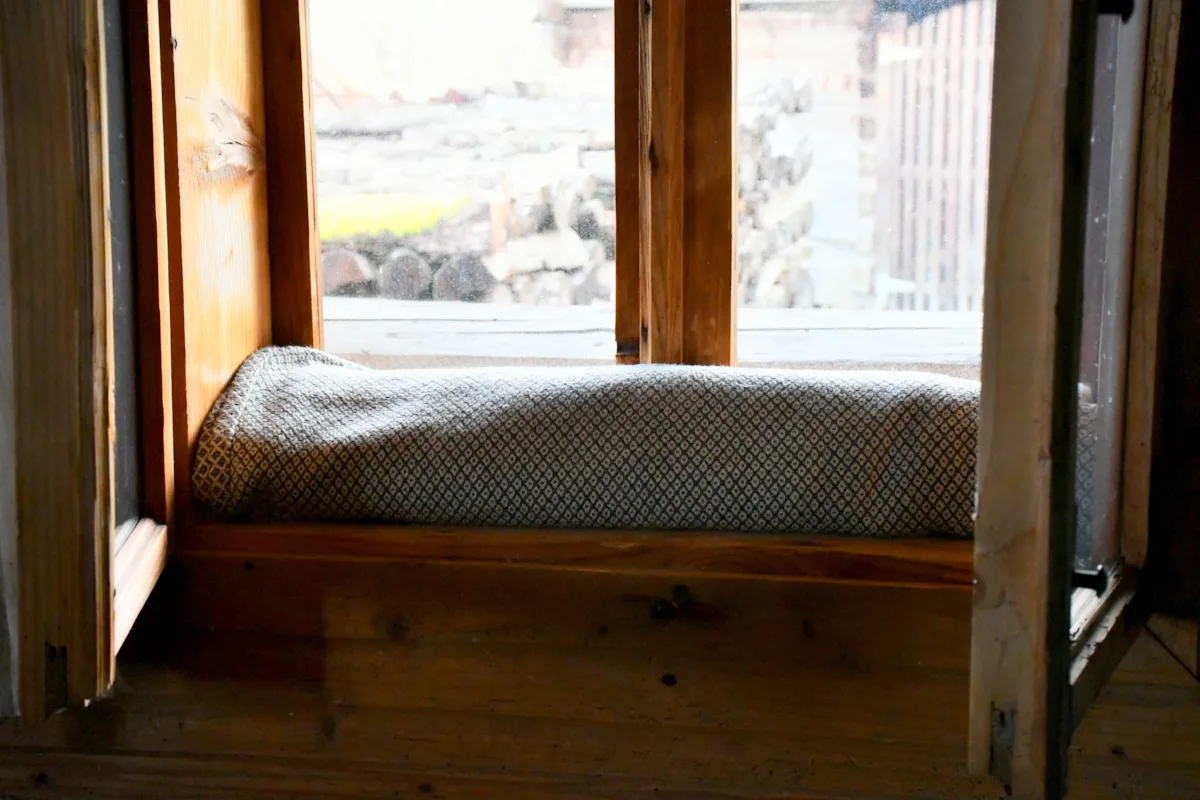
It’s also worth noting the heat that your home can harness from the sun. As soon as the sun comes up, open up those curtains and raise the blinds and allow the light to shine in. When the sun is beginning to set, close those same curtains and blinds to prevent the heat from escaping. Good quality (thick, floor-length) curtains will go a long way in keeping your house warmer.
If you don’t have those, you can also hang extra towels or blankets over a curtain rod as a temporary solution. Not only will they help to keep the room warmer, but they’ll also block out street lamps, so you can sleep better. A win-win situation if you ask me.
6. Block Off Rooms You Aren’t Using
The goal of keeping your house warm shouldn’t be to try to heat every room. Let’s be serious here; even in castles, they only warmed up the rooms that the owners occupied and which saw guests and visitors. Again, the kitchen was the warmest – it’s always a good place to be.
Given the cost of electricity and gas, it makes perfect sense not to waste energy, although it may take some rearranging on your part.
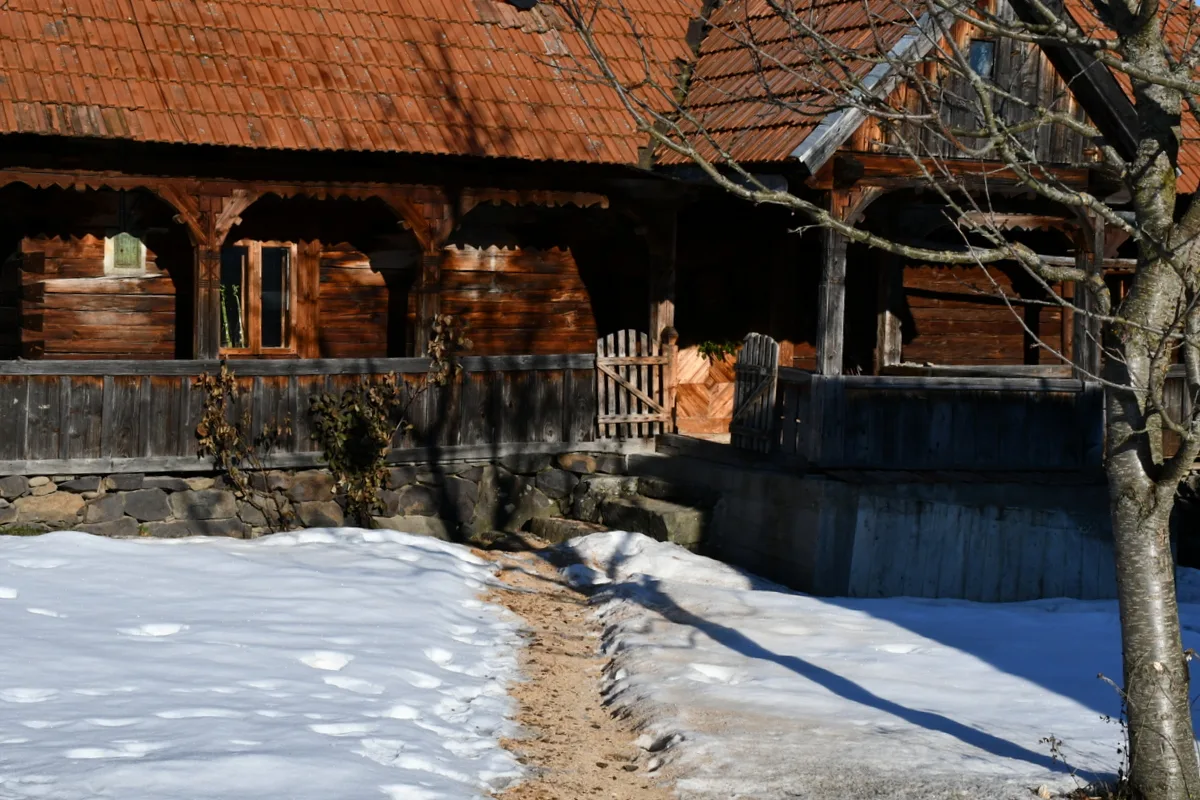
In our eighty-year-old wooden house, we have two rooms, plus a hallway (which is mainly used as a pantry) and a cellar with access only from the outside. From May through November, all the doors are open. Come wintertime, we close the door of the room that typically acts as a library and bedroom. In winter, this is our “refrigerator”. It’s where lard is stored, as well as cheese, hanging bacon and sausage.

This also means that the room with the fireplace becomes our central place to exist. It’s a home office, study, kitchen, dining room, living room and bedroom combined. I know it may be hard to imagine, but it’s a little bit like Little House on the Prairie.
For the most part, you’ll likely never encounter this situation. However, there is a lesson to be learned. That is, with a little creativity and flexibility, you may not need to heat every room.
7. Move Upstairs
Heat rises, and that’s a fact. In that case, try to move some of your daytime activity upstairs if you have a second floor.
You could move your home office or work area upstairs, perhaps turn a bedroom into a living room or an exercise room, depending on your current situation. Winter often lasts longer than we expect, so be sure to make each space as cozy and inviting as you can.
8. Firewood for Heating
Not everyone will have this option, so it’s nearing the end of the list. Followed by the one thing we all know we should be doing, but always find ways not to do it.
Heating with firewood is generally reserved for those folks who live farther from cities, closer to the source, so to speak. Though it is worth mentioning as a way to help you thrive in winter because not only does it keep you warm once the fire is burning in its place, it warms you throughout the entire process.
As you are stacking the wood, cutting the wood, splitting the wood and carrying the wood, you are getting a meaningful workout. That gives you reason enough to be warm for hours on end.
Heating with wood also allows you to heat for as long as you need the warmth, then let the fire die out, restarting as often as necessary. If you are able to cook over that same fire, that’s even better.
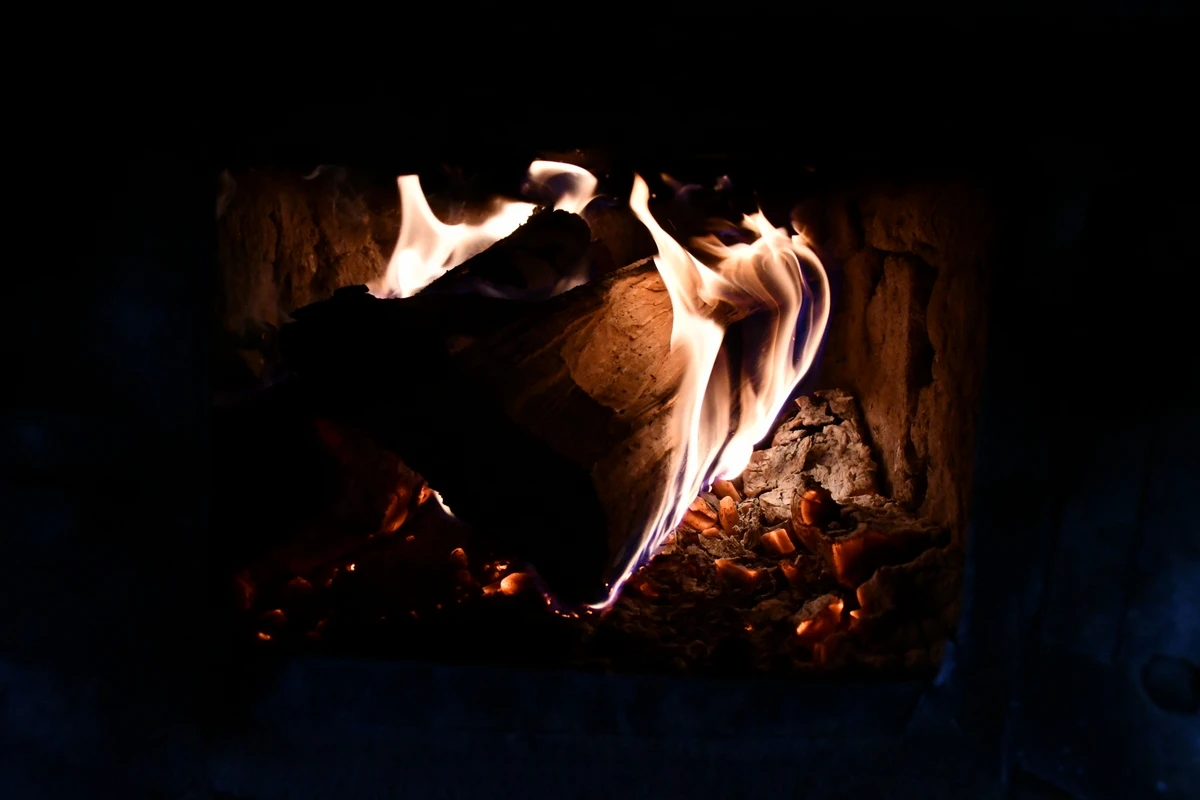
Depending on the type of fireplace you use, you may even get some light out of it, with a reduced need for electricity in the evening hours. Besides, there is the romance of the flame. There’s something about a softly glowing and crackling fire that not even beeswax candles can touch. Though candles are wonderful for small spaces and for lifting your mood, so go ahead and burn them anyway.
Additional articles related to wood heating:
- 10 Smart Ways of Collecting Free Firewood
- How to Properly Season & Store Firewood
- 10 Beautiful & Practical Firewood Racks for Indoor & Outdoor Storage
9. For Better or Worse – Exercise
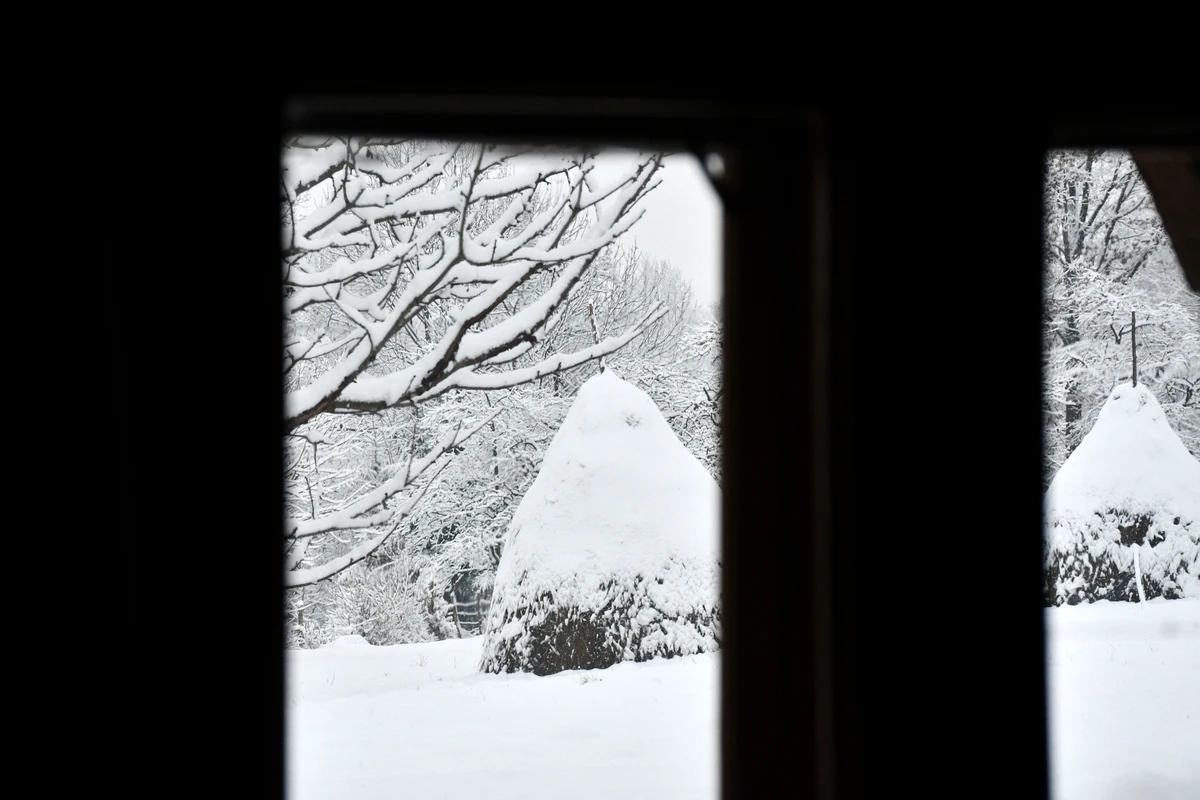
One of the best ways to help you stay warm and thrive in winter is to exercise. I know you probably don’t want to hear that, but it’s absolutely true.
If you aren’t getting enough time outdoors in nature, you have to bring your physical activity indoors. After all, moving your body generates body heat. You could row, use a stair climber or utilize any number of machines. Heck, you can even dance around the house in all those layers, perhaps with some weights on your ankles for an added benefit.
You can also do these exercises while the windows are open, so that you inhale fresh air while working out.
Bottom line – move around. Your body will thank you for it.
If you really want to warm up your house, invite a bunch of friends over for dinner and a movie night. The physical warmth may be temporary, yet the memory will last forever.

Get the famous Rural Sprout newsletter delivered to your inbox.
Including Sunday musings from our editor, Tracey, as well as “What’s Up Wednesday” our roundup of what’s in season and new article updates and alerts.

